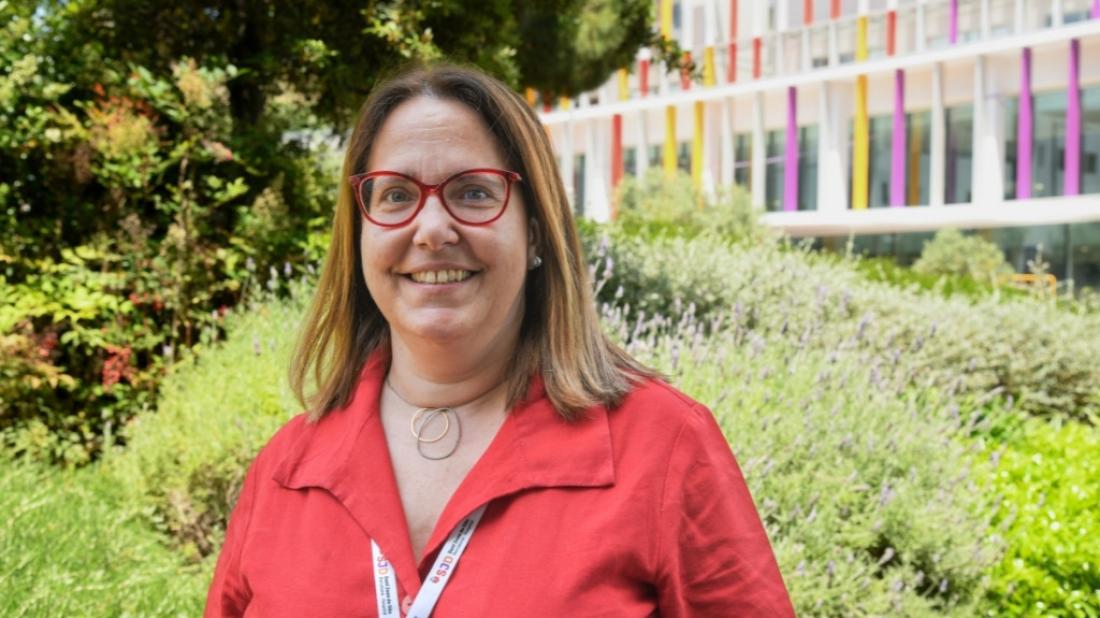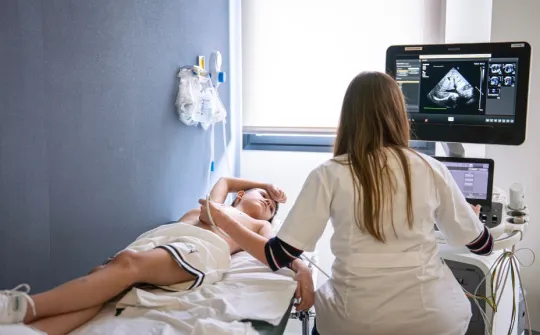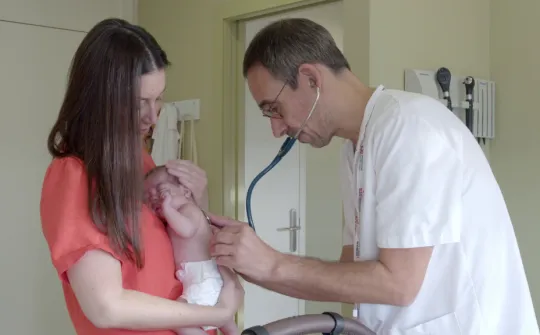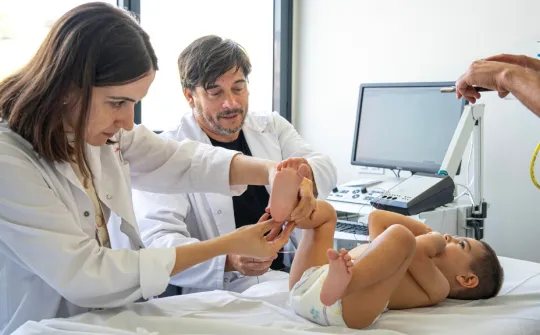"Our goal is to ensure that patients with leukaemia have access to immunotherapy treatments from the outset, not only in the event of a relapse"

Dr. Susana Rives is the head of the Haematopoietic System Tumours Functional Unit of the Oncology Department at SJD Barcelona Children's Hospital. She has been working as a specialist in paediatric oncology since 2000, treating patients, researching paediatric acute lymphoblastic leukaemia (ALL), and applying CAR-T therapies.
In 2022 she appeared on the list of the top 100 medical specialists in Spain according to Forbes magazine and received an award "for her excellence, professional career, honesty and commitment" from the Barcelona Medical Association (Colegio de Médicos de Barcelona (CoMB). We spoke with her about the awards, her career and how CAR-T therapies have shifted the paradigm in the treatment of leukaemia.
After more than 20 years treating and researching childhood leukaemia you’re being recognised for your work. What is your reaction?
We’re all flattered by awards and recognitions. For me, even when they are personal they also reflect not only my own trajectory but that of an entire team, and they represent the harvesting of personal fruits that would never have been possible to achieve on my own. I’m grateful for the Barcelona Medical Association’s recognition because one of the people who promoted my candidacy is the father of a patient and the favourable vote comes from colleagues, from other doctors, who value our work.
This recognition highlights your "commitment" to the practice of your profession. How do you define this commitment?
Our whole team is committed to the patients and their families. Commitment requires dedication and time, which is complicated in the current context. For example, on an initial visit for CAR-T treatments we can easily spend two hours, and I’m not exaggerating here, going over the patient's history. You also have to remember that when it comes to new treatments, expectations have to be adjusted considerably and we need to adapt the language to both the parents and the patients.
There is also a commitment on the part of the institution since these types of therapies involve a multidisciplinary team and a great deal of clinical support led by nursing, as well as the social and psychological support families need to deal with the many aspects of each case. Our patients and their families go through long and difficult processes and they deserve this commitment.
The paradigm for the treatment of paediatric lymphoblastic leukaemia has changed with the advent of CAR-T therapies. How have they been developing in recent years?
In cell therapy, and in the specific case of CAR-T, the initial development was academic in nature. It started at several North American hospitals and universities. Seeing that the response was good in the initial clinical trials, some pharmaceutical companies took a chance and bought patents from the research centres. Not only that, but this is an exceptional case because it was initially developed for children and adults, but the positive response in paediatric patients meant that the product was approved earlier for children than for adults, which isn’t usually the case.
Our hospital started a clinical trial with paediatric patients in 2016 in collaboration with the pharmaceutical company Novartis, although the initial development had been academic in nature. This trial was conducted in collaboration with Hospital Clínic, which studied adult patients. In 2017, we launched the academic CAR-T at both centres and had the two trials running simultaneously. The drug agencies approved the version developed with the pharmaceutical company first (in 2018 in Spain).
Why was the non-academic CAR-T approved first?
The problem was that because the Novartis treatment had been fully approved, it would have been necessary to demonstrate superiority or some kind of advantage provided by the other treatment, which would have required a new trial and a comparison that was not financially feasible for hospitals or academia. That was the reason why our centre was left out of the multicentre phase II trial in paediatric patients. But we decided to apply for a grant from the Ministry of Health through the Carlos III Institute. The grant we received was the largest one ever, at one million seven hundred thousand euros.
One of the advantages of developing this cell therapy in an academic setting is that, aside from greatly reducing the cost (industrial CAR-T is three times more costly to develop than academic CAR-T), producing it at the hospitals themselves would greatly reduce waiting times, which is critical in patients in the most complicated situations. This experience would open the door to a research model that, if replicated, could perhaps allow more sophisticated therapies to be produced in the country of origin and reduce costs, making them more accessible globally.
Has the academic CAR-T clinical trial been approved yet?
This 2023 has been approved and in April we have opened the patient trial. The five largest hospitals in Spain that offer this cell therapy have been authorised, including our centre as a monographic paediatric hospital. The aim is to recruit over the next two years about 30 patients diagnosed during childhood or adolescence. The phase I trial showed that the product was safe, including the possibility of fractionated administration instead of a single dose. Preliminary efficacy data were similar to other approved CAR-Ts. In phase II, in addition to confirming safety, we want to obtain efficacy data for the therapy.
What is the medium-term future for the treatment of paediatric lymphoblastic leukaemia?
Apart from CAR-T, which we’ve used to treat relapsed patients with acute lymphoblastic leukaemia, we have our sights set on CD1a-CARTs, which would allow us to respond to other types of lymphoblastic leukaemia and could open up new lines of cell therapy.
We are also hopeful about the possibility of CAR-T in the medium term not only for relapsed patients but also as a first-line treatment in paediatric patients. This is possible because we are part of the Spanish leukaemia group of SEHOP (Spanish Paediatric Haemotology and Oncology Society) and there is an international clinical trial that has already begun as part of the “ALLTogether” initiative. We could be a reference centre in this trial, but it is still early days.
If we want to cure nearly all patients, we need to incorporate new treatments and immunotherapy at earlier stages, and we need to refine the diagnosis, prognosis and stratification of patients. It is a very ambitious project which aspires to prevent patients from relapsing and getting to the point where certain treatments such as CAR-T are necessary. In the recent past we have been intensifying treatments, but we now believe that we must de-escalate when possible to cure with fewer sequelae, especially in paediatric patients.
Is research the best part of your job?
I am passionate about research, but what I like most is the contact with patients, practising medicine as a doctor. However, participating in the emergence of new therapies, observing how patients whom it would once have been impossible to save can now be cured, brings a great deal of satisfaction. That effort has to be paid for, and in my case that means putting more emphasis on research and a bit less on the clinical. Even so, the team usually makes up for this: the haematology-oncology team (Anna Alonso, Ana Faura, Albert Català), the other members of the oncology staff and our nurses, Georgina Pedrals and Cristina Llanos (specialists in CAR-T and clinical trials, respectively) are my lifeline to the clinical side and that helps me keep track of the cases.



